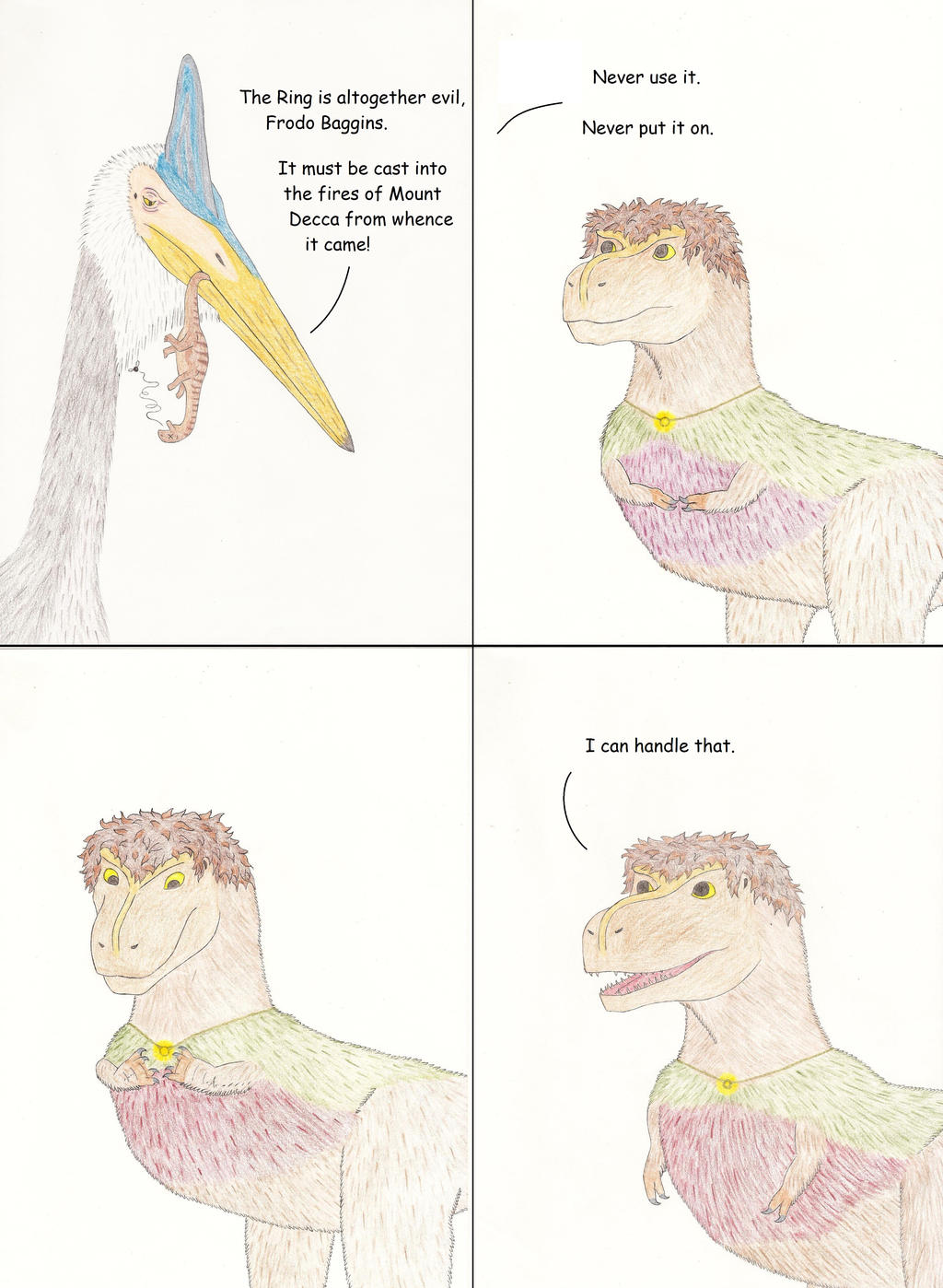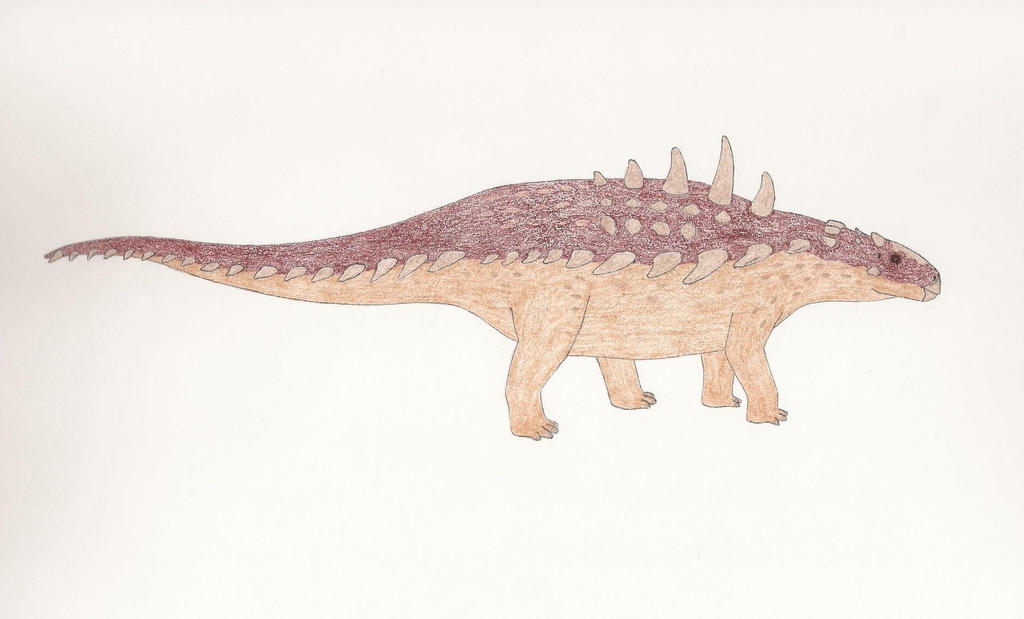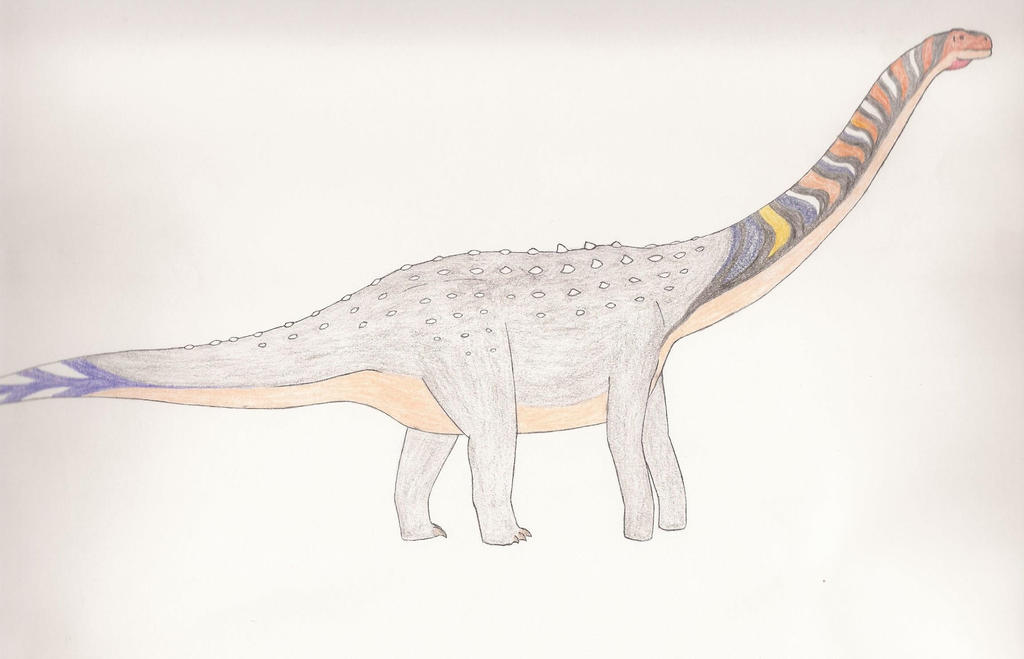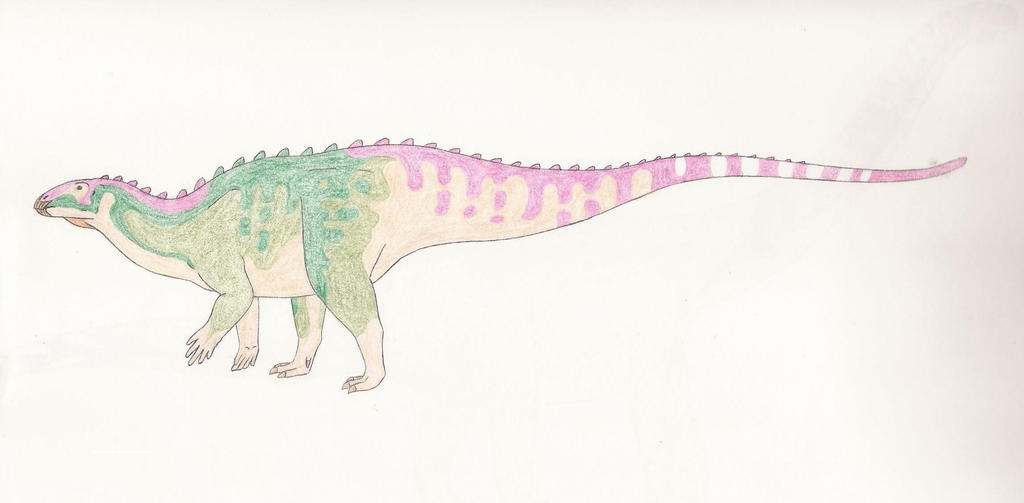Hey, it's still Dinovember! How about another creationist dinosaur book review? Continuing chronologically, we come to the next book in my collection: Dinosaurs by Design, authored in 1992 by Duane Gish and illustrated by Earl & Bonita Snellenberger. This is one of those books that seems to sheepishly know that the Dinosaur Renaissance was going on at the time of its release, and yet obstinately ignores all the important points. You can see what I mean right on the cover. There's a strong suggestion of dynamic activity, but the dinosaurs are all still drawn exaggeratedly reptilian monsters. That T-rex is in a tripod pose for cryin' out loud! (For the record, plenty of non-creationist books pulled this stunt as well.)

The first section of the book gives its space to a brief discussion on the history and nature of paleontology. The author tells the story of Gideon Mantell's discovery of Iguanodon after his wife Mary Ann brought home an odd fossil tooth, sparking his interest. The story is accompanied by a picture of the couple, which despite not having any dinosaurs for me to evaluate, I thought was kinda cute, so I included it here.
In the section detailing the methods of paleontology, the artists include a group of scientists mounting a dinosaur skeleton for a museum display. I always thought there was something odd about this skeleton, as it looked sort of like a
Psittacosaurus but was ten times too big. As it turns out, I had reason to be confused, since it's clearly based on Joseph Leidy's original reconstruction of
Hadrosaurus, commissioned before much of the skeleton (including the skull) became known. (
Click here for a comparison picture.) Without the skull, Leidy didn't know to give it the classic hadrosaur "duckbill", and so just gave it a generically beaky appearance. If the text and used this to talk about the history of paleontology, that would've been cool, but the text (and the costumes of the scientists in the picture) clearly mean for this to represent current science, so points off for obsolete information. Also, I'm kinda creeped out by the overly humanoid appearance of that dinosaur's rib cage.
The interesting thing about this book is that it seems to essentially be a reboot of
1977's Dinosaurs: Those Terrible Lizards. Both books have very similar structure, and nearly identical choice in species. For example, the only difference in their treatment of "lightweight" dinosaurs is the omission of
Ornithomimus. The paintings are of course much better in this volume. Unlike the previous book, the difference between each is obvious, and most of the dinosaurs now at least balance with their tails off the ground. Oddly
, Podokesaurus is portrayed as a beaky, hyspilophondont looking thing, despite the fact that it was much more similar to
Compsagnathus (portrayed on the left). I'd be interested to know what led to the inclusion of
Podokesaurus in both this and the 1977 book in the first place, considering that the species is based on a single specimen discovered in 1911 and destroyed in a fire a few years later. If they were simply looking for something to fill out there roster, there were plenty of better known small dinosaur to choose from.
Saltopus for example was a very popular presence in dinosaur books of the 70s and 80s. Of course every single one of these dinosaurs should have prominent feathers, but we won't fault a creationist book from the early 90s for that. At least
Oviraptor has a properly crested head!

After the "lightweight dinosaurs" section, the book discusses the various armoured dinosaurs (stegosaurs, ceratopsians, and ankylosaurs), as well as sauropods. I didn't want to drag out this post longer than I had to, so I decided not to include them, as there wasn't anything particularly interesting to say about them. I would like to note the inclusion of
Monoclonius, Ultrasaurus, and
Supersaurus, all very common stars of 1980s dinosaur books.
I'm including this next picture for one reason only: the appearance of Freud the Tsintaosaurus! Forgive me for being juvenile, but I think the appearance of this phallic meme in this particular book is just too humorous not to take note of. The first discovery of Tsintaosaurus included a nearly complete skull that lacked only a large portion of its crest. Most paleontologists didn't recognize this however, and restored the animal with a unicorn-style spike on its head. At the same time, scientists had also realized that the duck-billed dinosaurs with large, hollow crests used them to produce loud, booming sounds, and many suggested that the crestless species had soft-tissue air sacs on their faces to fulfill the same function. Now, since Tsintaosaurus did not have a hollow crest, many suggested it should have air sacs on its face like the other crestless species. Hilariously, Tsintaosaurus seems to have been one of the only duck-bills ever illustrated with this speculative feature. There's no reason to think this
had to be an actual feature of the animal, however. Indeed, many chose to illustrate it
without the inappropriately suggestive sacs, so I find it particularly odd that a book which devoted several introductory pages to blaming evolution for the rise in sexual immorality (among various other sins) would chase this trope. Draw whatever Freudian implications you will.
 |
| Penis. |
Another bizarre hold-over from
the 1977 book is the treatment of pachycephalosaurs and psittacosaurs as a single group. Scientists knew
Psittacosaurus was a ceratopsian pretty early on, so there is no reason why it shouldn't have appeared with Triceratops and kin several pages earlier. Perhaps, given
Psittacosaurus' bipedality, Gish felt a ceratopsian identity would promote evolution somehow? Who knows. It's not the best looking psittacosaur anyway; it should have much more prominent cheekbones, which incidentally would make its family affinity a little more obvious. At least it seems roughly in scale with the dueling
Pachycephalosaurus pair.
Here's probably the best example of the "we know it's the Dinosaur Renaissance but we don't like it!" attitude. The artists
clearly paid close attention to the details of
Allosaurus' skull, rendering a very commendable reconstruction... aaand then they have the tail dragging obstinately on the ground in the dreaded killer kangaroo pose. Come on guys! You must have referenced much more up to date material for your inspiration for that head! Is it too much to ask for a properly balanced theropod? Probably, since that would mean reading material by people who believe birds evolved from dinosaurs. Talk about throwing out the baby with the bathwater.
 |
| So close, yet so far. |
Of course Tyrannosaurus rex fares no better himself, as the King of the Dinosaurs pulls off his best impression of Godzilla, the King of Monsters. Bonus points though for trotting out the classic "Here's the actual size of T. rex's
STEAK KNIFE teeth!!!" trope.
Poor
Tenontosaurus.
You just can't ever get rid of those pesky Deinonychus packs, clinging to you in every book you appear in. It's okay; I appreciate you for what
really makes you special, like your unusually long tail which the artists completely ignored because they were too busy with the murder-death-kill raptors. You have my sympathies. As do the
Deinonychus for their weird bug-eyed frog-faced birth defects. That
Velociraptor seems nice and happy though! Look at him, dancing a little jig over there!
These pterosaurs are... something else. On the one hand, yay! They have furry bodies! That automatically makes them more up-to-date than the vast majority of pterodactyl depictions ever produced. On the other hand, what on earth did they do to Quetzalcoatlus?!? Enormous scales from ears to snout, and giant protruding fangs! I'm pretty sure nobody ever suggested that Quetzalcoatlus had teeth, so who knows where they got that idea from. Pterosaurs are also know to have lacked large scales, being clad only in either smooth skin or fine furry pycnofibers. Both the quetzal and the Pteranodon run afoul in the scale department. The Rhamphorynchus is okay, though.
 |
| Leathery Winged Monstrosities |
Th part of the book dealing with the supposed evolution of birds from dinosaurs genuinely angers me these days, representing a act of blatant misdirection. The artists portray a
Struthiomimus ("ostrich mimic")and an
Ankylosaurus alongside a modern ostrich, with the
Struthiomimus obviously meant to represent the closer relative of the two. The author then makes much of the fact that
Struthimimus is a saurischian ("lizard-hipped") dinosaur, rather than an ornithschian ("bird-hipped") dinosaur, treating this as a definitive blow against evolutionary theory. Except his example is invalid. Remember the raptors from earlier?
Those are what birds are actually supposed to have evolved from. And guess what? Despite belonging to the saurischian lineage of dinosaurs, they actually have bird-like hips! In fact, the discovery of
Deinonychus was what kicked off the whole "birds are dinosaurs" thing in the first place, which the author has to have been aware of. To not mention this fact is essentially a lie of omission, and one that tempts the fates of those this book is aimed at. What happens to the kids that read this and then find out about
Deinonychus? Obfuscating the truth does you no favors.
 |
| Grasping at straw men |
Ugh. I'm in need of a palate cleanser before we finish up. How about we end things with this Sparkleraptor
Archaeopteryx? The feathers are very nicely done, if a little more of a gaudy blue than I would expect to see on the real animal, and while the primary feathers don't quite attach to the hands in the right way, at least the fingers aren't sticking forward off the wings like Sidewinder missiles. The songbird perching feet are more of an issue; the first (rear-facing) toe was higher up the ankle and not long enough to reach the ground, much less be capable of grasping anything. There's some evidence it may have had a raptor-style retractable claw on the second toe, but people have gone back and forth on this point, so it's not an issue. The head would have been completely covered with feathers, with no scaly skin. This last point is a bit odd, considering the creative team was so willing to bend the facts with the last image. One would think that if
Archaeopteryx was really "just a bird", the artists would jump at any chance to distance this animal from any supposed reptilian forebears. I suppose this just goes to show that the artists were more inclined to go chasing after common paleoart tropes rather than actually evaluate the evidence for themselves, despite the fact that it might've supported their point.
 |
| The epitome of Dinosaurs by Design |
Well, that's all for now. While I'm omitting some images for the sake of brevity, there are however a special batch of images from this book that I think deserve their own blog post. What might those be you ask? Two words: Creationist Cryptozoology! See you next time as we continue to evaluate the paleoart of Dinosaurs by Design!



















































